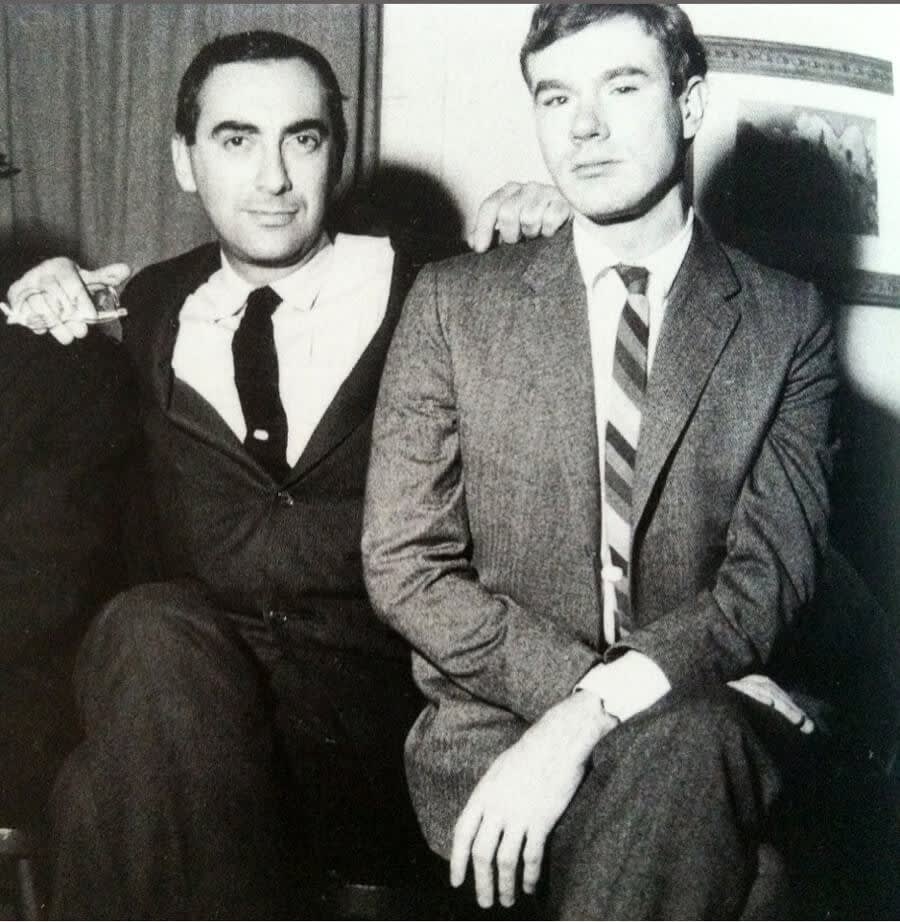Andy Warhol influenced the way we view art, fame and the commercial culture that we inhabit. The influences that turned Warhol from a sickly boy in Pittsburgh, into one of the most influential figures of the twentieth century, began at birth.
1. Julia Warhola
Born in Czechoslovakia in 1892, Julia emigrated to the United States with her husband, Ondrej Warhola in 1921. The Warholas had three sons, Paul, Andy and John. Ondrej often worked on construction sites away from their home in Pittsburg, so Julia stayed home and cared for their sons.
Julia was an artist. She drew, embroidered and made flowers from Campbell’s soup cans, which she sold to supplement the family’s income. She was also Warhol’s constant companion when, as a child, he became ill with Syndenham’s chorea, a neurological disorder that can cause uncoordinated jerking movements of the face, hands and feet.
Julia provided Warhol with art materials and encouraged him to draw. He often sat at the kitchen table, across from a print of da Vinci’s Last Supper, eating a bowl of Campbell’s soup.
Warhol moved to New York in 1949 and began work as a commercial artist. Julia joined him in 1952, sharing his apartment and studio on Lexington Avenue. The apartment was also filled with cats…about twenty five of them.
In 1954, mother and son each published a book of cat drawings. Julia’s book, Holy Cats was signed, Andy Warhol’s Mother, in the distinctive script that Warhol himself emulated in much of his work. Warhol’s book was titled 20 Cats Name Sam and one Blue Pussy. The grammatical error of “name” in the title was done by Julia. Warhol asked her to script his work and he let her misspellings stand.
The influence of Julia’s playful line drawing style, and whimsical page layout, can be seen in much of Warhol’s work. Julia moved back to Pittsburgh in 1970 and died in 1972, at the age of 80.
2. Marcel Duchamp
Warhol collected works by Marcel Duchamp long before the two ever met. Decades before Warhol, Duchamp challenged the definition of art and the place of artists in society. Duchamp moved from Paris to New York in 1915 and helped to establish the Society of Independent Artists. He submitted his piece, Fountain, for inclusion in one of the Society’s group shows. Fountain was a urinal, signed R. Mutt, 1917. The piece was rejected and Duchamp resigned. Warhol traded three of his portraits for a copy of the Fountain.
Duchamp did a series of what he called, readymades, which were ordinary objects that he designated works of art, long before Warhol did the same with everyday household items.
Warhol and Duchamp were both talented, theatrical, unpredictable. They both attracted admirers who wanted to be part of their celebrity life styles.
I really like Warhol’s spirit. He’s not some painter. He’s a filmeur, and I like that very much.” — Marcel Duchamp
3. Nathan Gluck
Nathan Gluck was an artist and graphic designer and consummate New Yorker. He studied at Cooper Union, Pratt Institute and the Art Students League. In the early 1950s, Gluck and a few other artists, invited Warhol to be part of a show at the studio loft of graphic designer, Jack Wolfgang Beck. Gluck encouraged and supported the work that Warhol did and even worked as his assistant from 1955 through 1965 (at minimum wage).
He encouraged and helped Warhol with illustration and design in his commercial work, and left when Warhol began to use the Factory as his studio. Gluck was a little too conservative for the Factory crowd, although he did maintain his friendship with Warhol. Gluck went on to have a successful career as an art director and graphic designer.
Of course, no amount of influence could have produced such a great artist, without Warhol’s innate talent and genius. But, sometimes, we all need a little encouragement, guidance and inspiration and Warhol seems to have gotten that from Julia, Gluck and Duchamp, three great influences in his life.
The end results, some of which hang in our gallery, are the product of the great mind of a great artist.










